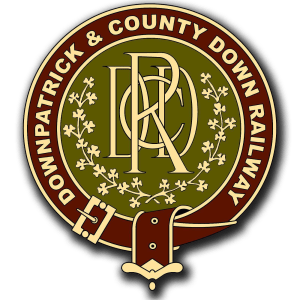| At a glance: | |
|---|---|
| Builder: | Orenstein & Koppel (Berlin, Germany) |
| Build date: | 1935 |
| Original company: | Cómhlucht Siúicre Eireann, Teoranta |
| Withdrawal date: | 1962 |
| Final company: | Cómhlucht Siúicre Eireann, Teoranta |
| Arrived at DCDR: | 1987 |
| Current status: | Operational |
| Current owner: | DCDR |
CSET No. 3 was originally one of nine shunting locomotives built for the Cómhlucht Siúicre Eireann, Teoranta (Irish Sugar Company, Ltd.) to work in their sugar beet factories. There were three factories, at Mallow, Thurles and Tuam (a fourth existed at Carlow, which utilised Belgian-built locomotives) and each received three locomotives. Confusingly, each factory also numbered their locomotives independently of each other, creating three No. 1s, three No. 2s, and three No. 3s!
Our own No. 3, works No. 12662, was assigned to Mallow originally, and unlike its sisters which tended to swap between factories, it finished its career there too. The locomotives could be distinguished from one another as the factories applied their numbers in different ways – our No. 3 has large yellow painted numerals on the tanks like the other Mallow engines.
Manufactured in Berlin by renowned German locomotive builders Orenstein & Koppel, No. 3 rolled off the production line in 1935 as part of the second batch of CSET’s order – the order was split into two with six locomotives being built in 1934 and the remaining three in 1935.
No. 3’s appearance certainly doesn’t betray its continental origins, and is instantly recognisable in Ireland thanks to its funnel-shaped chimney, sanding dome and well tank. No. 3 is of 0-4-0T wheel arrangement with a top speed of around 32mph.
After withdrawal by CSET in 1962, No. 3 languished around the Mallow factory until it was purchased for preservation the following year, along with Thurles No. 2 and Thurles No. 1. The three locomotives moved from place to place while their new owner, based in England, tried to raise the funds to get them across the water.
After many years stored in Dalkey, the locomotives were moved to Broadstone on the other side of Dublin, but unfortunately the cost of transport required the sacrifice of No. 2. No.’s 1 and 3 ended up at the site of Ballynahinch Junction in 1978, and it was at this point their owner realised they were the wrong gauge for an English railway! As such, they remained in situ until 1987, when the fledgling DCDR purchased the pair and moved them to Downpatrick.
Following an overhaul at Whitehead, No. 3 was returned to traffic in 2000. After reaching the end of its 10-year boiler ticket she was once again withdrawn, and its boiler was once again sent to Whitehead in 2016 for overhaul. By the end of 2018 No. 3 was back in steam, and after a few days of testing returned to passenger service on the last Christmas trains of that year.
